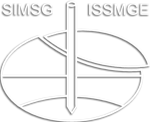Development of a sand-pluviation test stand to investigate pluviation considering air-resistance and (partial) vacuum-conditions
Development of a sand-pluviation test stand to investigate pluviation considering air-resistance and (partial) vacuum-conditions
To investigate influencing factors on the sand-pluviation method, the developed sand-pluviation test stand needs to be variable in multiple aspects. This includes falling height, deposition intensity (which can be controlled by different sieves), as well as the general set-up. The falling height must also be adjustable during the experiment to maintain consistent conditions for the entire test. All these requirements could be met by the developed test stand.
Because the discussed experimental equipment was created to specifically investigate the influence of (partial) vacuum-conditions on the pluviation process, a vacuum bell was built to encase the entire experimental set-up. The vacuum bell was developed such that the set-up is visible during the whole pluviation process. This allows for observation of irregularities during the pluviation process. However, the vacuum bell requires that the entire pluviation set-up has to be operated from the outside. Specifically, that includes the slide damper for the opening of the sand silo, the linear motor for the upwards movement of the apparatus, and the scraper for sample levelling after the pluviation process.
Specific difficulties in the development and construction of the pluviation stand were the design of the slide damper, the generation and maintenance of the vacuum, and contamination of several components with sand during the test. All these aspects require a thorough cleaning of the entire experimental set-up between each experiment. Specifically, sliding parts are very sensitive to sand grains and helpful adjustments to the pluviation stand have been developed and will be discussed in this paper.
Natascha Heim; Sascha Henke
5th European Conference on Physical Modelling in Geotechnics (ECPMG2024)
New facilities, new equipment, measuring techniques
https://doi.org/10.53243/ECPMG2024-76
